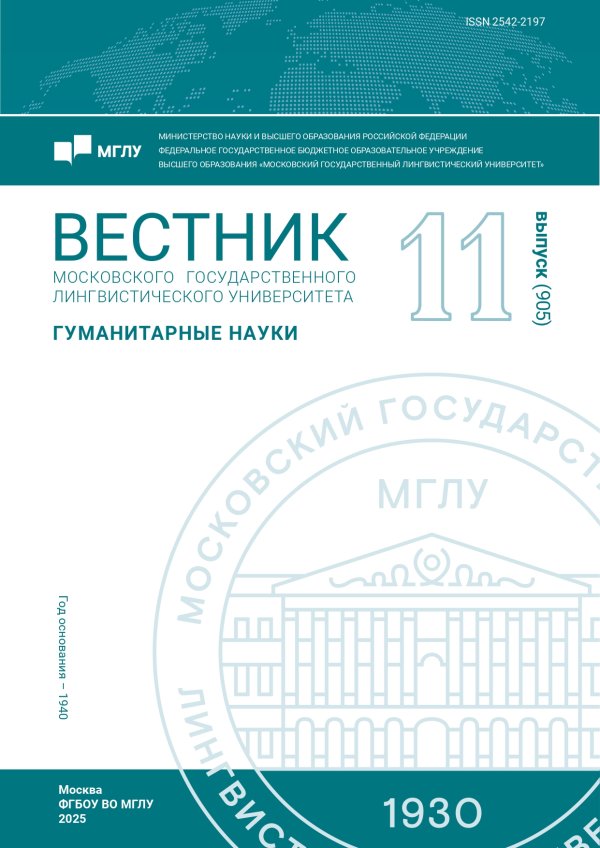Латинские античные и средневековые палиндромы в диахронии
- Авторы: Муравьева А.И.1
-
Учреждения:
- Московский государственный лингвистический университет, Московский государственный институт международных отношений (университет) МИД Российской Федерации
- Выпуск: № 2(896) (2025)
- Страницы: 29-36
- Раздел: Языкознание
- URL: https://journal-vniispk.ru/2542-2197/article/view/283957
- ID: 283957
Цитировать
Полный текст
Аннотация
Целью исследования является рассмотрение основных гипотез происхождения латинских палиндромов, как лингвопоэтического и культурологического явления, отражающего универсальное стремление человеческого разума к зеркальной симметрии. В работе рассматривается диахронический аспект изучения античных и средневековых латинских магических квадратов и палиндромов в современной российской и зарубежной науке. Также в статье дается этимологический и структурно-семантический анализ латинских палиндромов-лексем и палиндромов- предложений.
Об авторах
Алсу Иршатовна Муравьева
Московский государственный лингвистический университет, Московский государственный институт международных отношений (университет) МИД Российской Федерации
Автор, ответственный за переписку.
Email: hommy774@yandex.ru
старший преподаватель кафедры классической филологии, старший преподаватель кафедры романских языков
РоссияСписок литературы
- Borgmann D. A. Palindromes: The Ascending Tradition // Word Ways. Boston, Massachusetts: A. Ross Eckler, Ed & Pub, 1980а. P. 91−101.
- Гаспаров М. Л. Русский стих начала XX века в комментариях. М.: Фортуна Лимитед, 2001.
- Лотман Ю. М. Статьи по семиотике и топологии культуры // Избранные статьи : в 3 т. Таллинн: Александра, 1992. Т. 1.
- Бубнов А. В. Лингвопоэтические и лексикографические аспекты палиндромии: дис. … д-ра филол. наук. Орел, 2002.
- Пономаренко И. Н., Сегал Н. А., Уварова Л. В. Семантика и прагматика палиндромов в языке и интернет-коммуникации // Научный диалог. 2021. № 11. С. 168−182.
- Рыбин В. В. Фонологический компонент японских палиндромов // Вестник Санкт-Петербургского университета. Серия 9. Язык и итература. 2007. Вып. III. С. 115−118.
- Бонч-Осмоловская Т. Б. Введение в литературу формальных ограничений. Самара: Бахрах-М, 2009.
- Borgmann D. Palindromes: The Rotas Prehistory // Word Ways. 1980b. Vol. 13. № 1. P. 11−17.
- Sheldon R. M. The Sator Rebus: An Unsolved Cryptogram: Cryptologia // Cryptologia. 2003. № 27 (3). P. 233−287.
- Varsamis S. The Tradition of Spatial Writing: The Case of the Palindrome in between Literature and Architecture // Footprint. 2012. № 10−11. P. 143−164.
- Michaelsen O. Classic Latin Palindromes // Word Ways. 2006. Vol. 39. № 1. P. 36−37.
Дополнительные файлы











